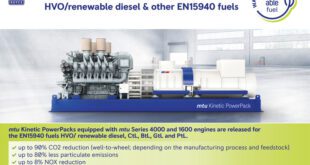In today’s world, it seems that one side is wanting for ways to decrease our “footprint” and the opposite facet is somewhat ambivalent concerning energy and the implications that arise from our ever increasing hunger for energy. You actually don’t should be labeled a “Tree Hugger” to care about the surroundings and conserve our natural resources. With this in mind, let’s take a nearer examine geothermal energy and how this wonderful resource that has been around since the start of time is creating its means to the forefront of recent society.
To begin, geothermal energy is merely the Earths heat that naturally happens underground. There are 3 classes of this energy, electrical power generation, direct heating & geothermal heat pumps; this text will specialise in the latter. As we have a tendency to all know, the Earth’s temperature rises gradually with depth, culminating at 7600º F at the inner core. After all we have a tendency to’re not wanting to tap into heat sources at seventy 600 degrees, however just below the surface of the land that surrounds your business or home, is an endless & sustainable offer of energy to heat and cool your building.
There are a couple different geothermal systems, the first being open loop. An open loop system utilizes a lake, pond or underground aquifer as the heating or cooling source; the open loop system will be used if your structure is found shut to one of these. Next is the closed loop system, that, as the name implies is closed and uses a mixture of water and environmentally friendly antifreeze that’s enclosed in the system. There are also horizontal & vertical loop systems that can be explained shortly. Let’s take a nearer look at how geothermal heating and cooling systems work for commercial & residential applications. In a very closed loop vertical system, that is most prevalent for residential applications, a system of pipe is buried in the property surrounding the structure and a series of holes are dug for the pipe. Relying on the location, the pipe can run from anywhere between 100 and three hundred feet.
The water/antifreeze mixture is then pumped through the pipe system and in turn the geothermal energy of the ground heats the mixture throughout the winter time for a heating impact or removes the heat from the mixture during the summer time for a cooling effect. In a horizontal loop system, the identical principle applies, except that the pipe is buried at a abundant a lot of shallow depth and the pipe system runs horizontally to ground level, thus requiring a bigger footprint of land to put in the system. That is why vertical loop systems are much additional prevalent in higher density areas. An extra benefit is the heating impact geothermal will add for your domestic water needs. Typically, the system will lower your water heating bills by 35%!
With the demand for fossil fuels skyrocketing from emerging industrial countries such as China, energy prices will be rising until the demand levels or starts to decrease. Geothermal energy may be a real answer to reducing our dependence on these fuels and is not a technology you have to attend for the lots to implement. After all the initial installation prices are higher than standard heat pump systems, but the savings on energy prices over the lifetime of the system so much outweigh the initial costs.
Currently I am going to answer your question concerning longevity. A geothermal life averages twenty two years, which is regarding 7 years longer than a standard heating & cooling system. The system has a further profit further; less moving elements equal less things to interrupt and fewer maintenance.
Learn more about energy 2 green review. In order to save energy you should know about magniwork. Click here for more information about magniwork review.
 Alternative Energy HQ solar power for homes, wind energy, and bio fuel issues
Alternative Energy HQ solar power for homes, wind energy, and bio fuel issues






